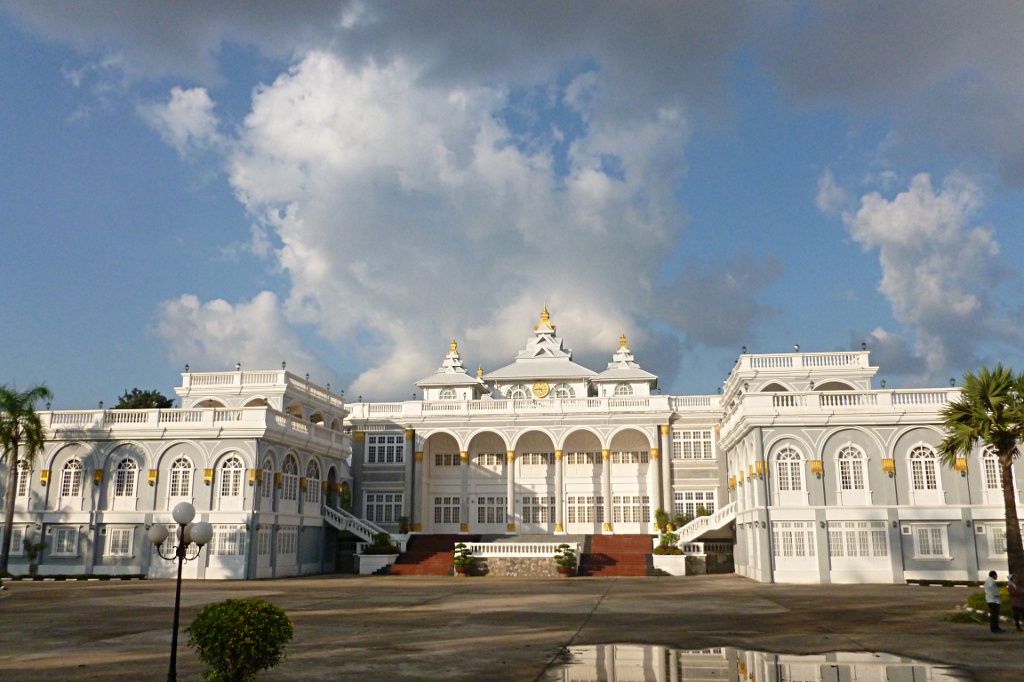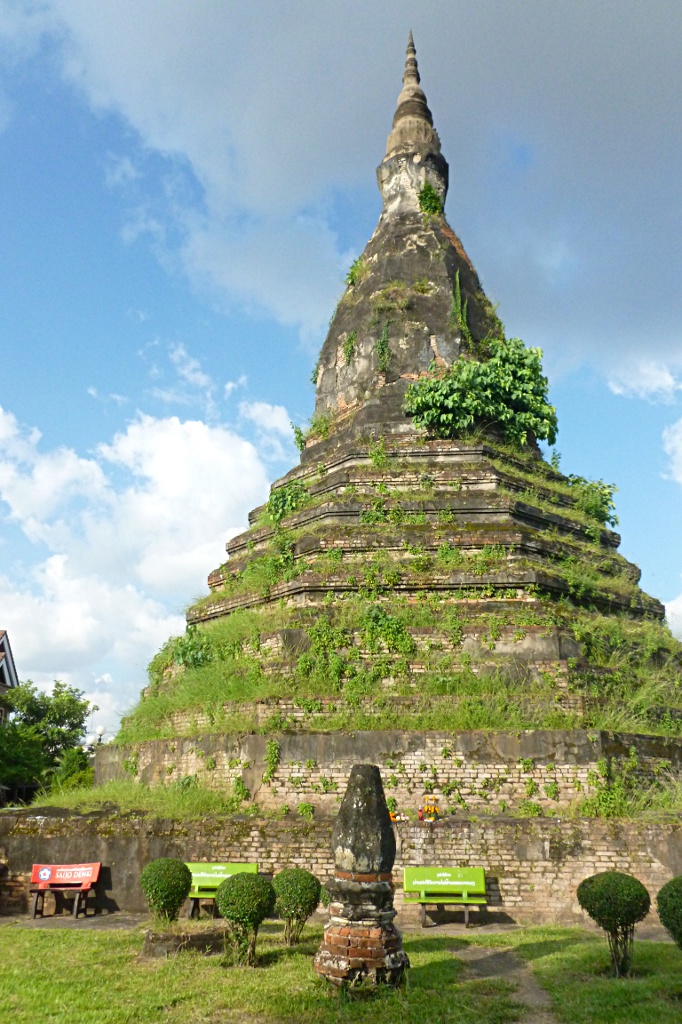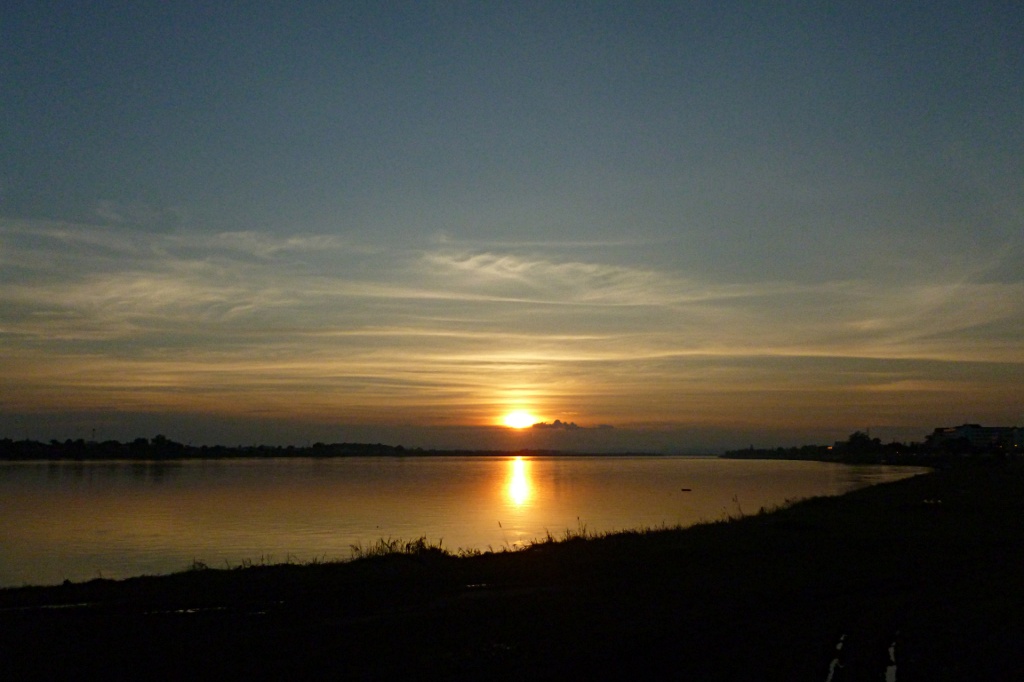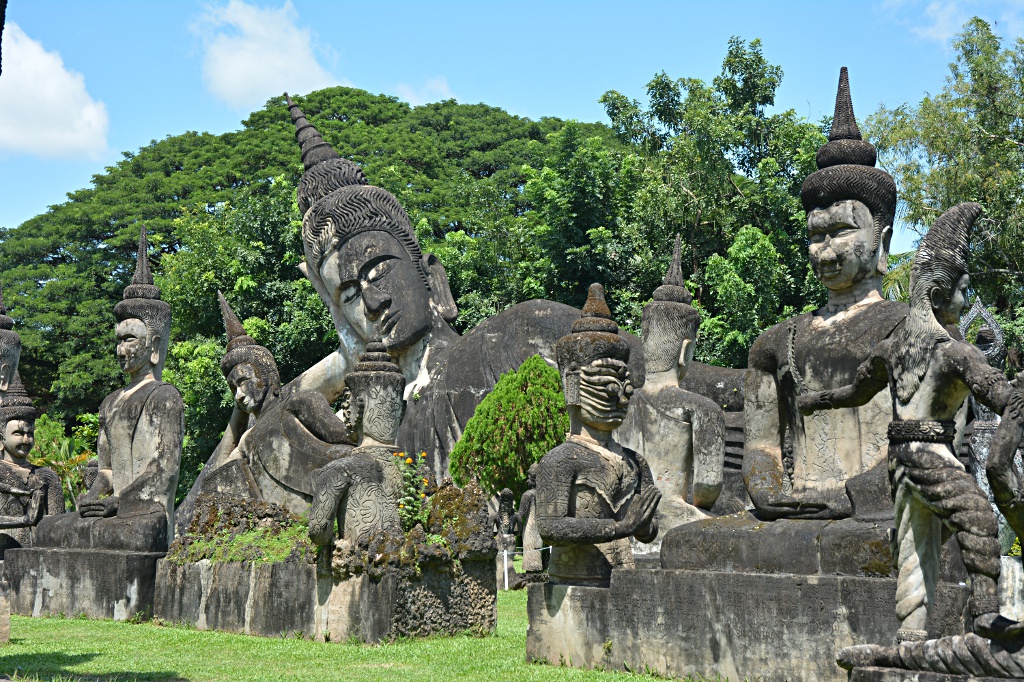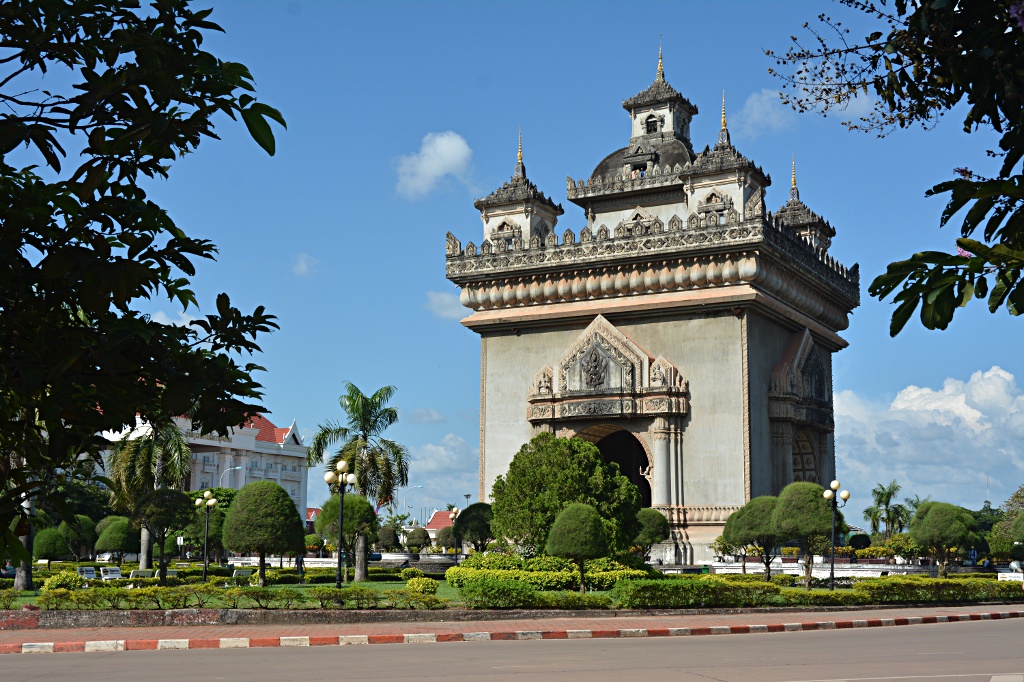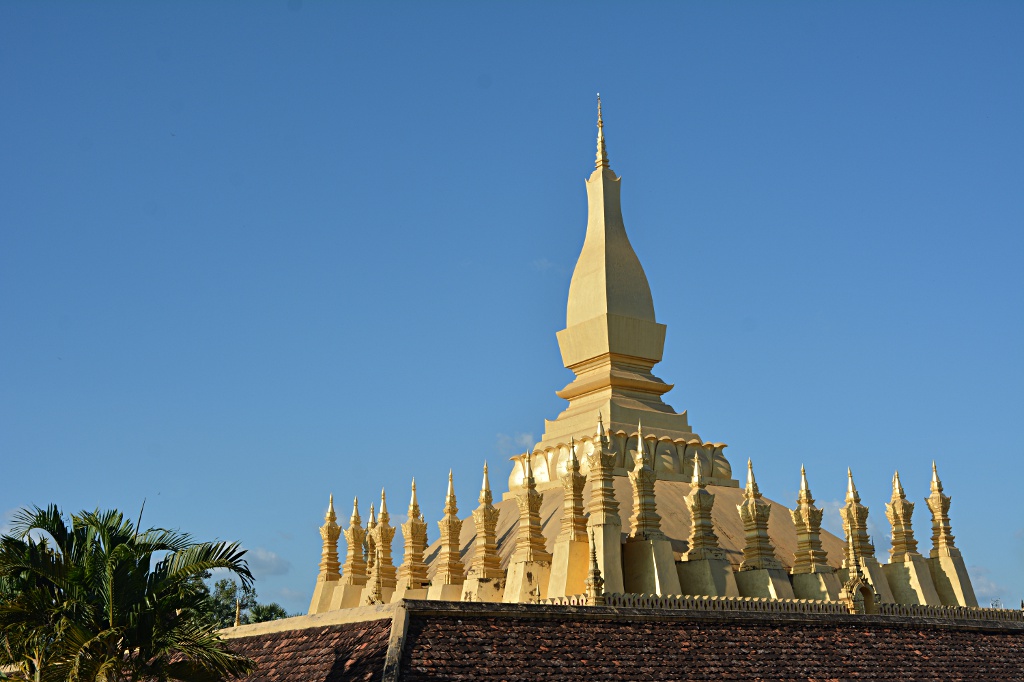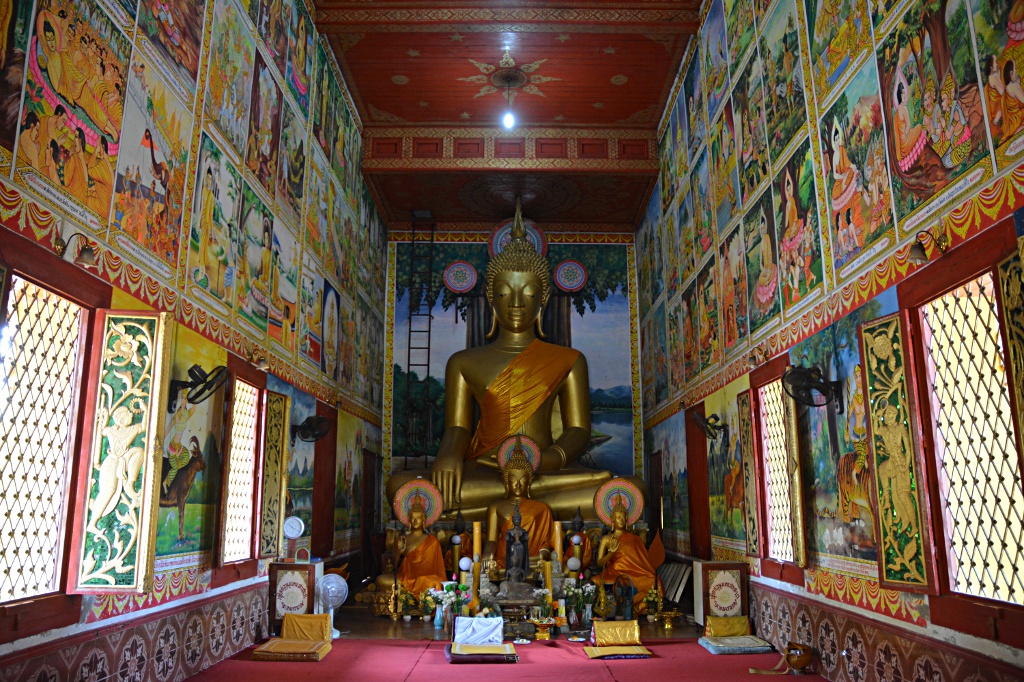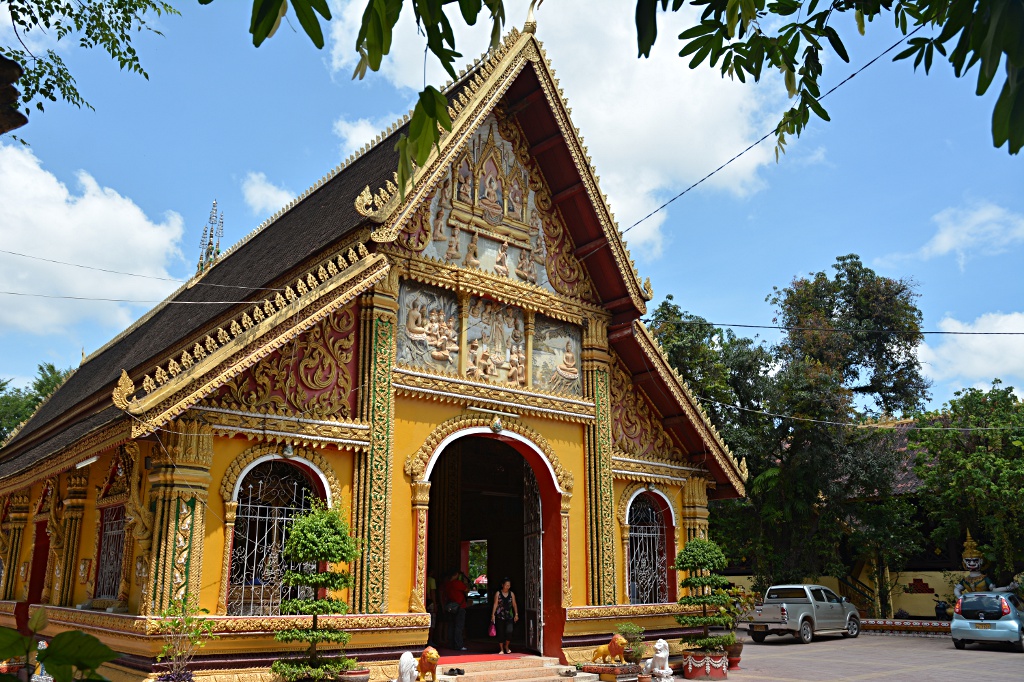After roughly 4 hours on the bus we arrived at the Northern Bus Station of Vientiane, the capital of Laos. While we first did not recognize any difference between the capital and any other place, the city bus at the bus station gave a first indication that a few things might be different after all. We spent roughly two days to discover how much Vientiane is different from the rest of the country.
We had decided to take the 10 am vIP bus from Vang Veng into Vientiane. On a rather bumpy main road we slowly but surely approached the capital city. From the bus we could not determine whether we were entering another village or town or whether we had already arrived in Vientiane. The buildings and roads looked pretty much the same as anywhere else in Laos. Suddenly the bus made two left turns and pulled into the bus station where we were asked to get off the bus. Even before we had our luggage unloaded, we were approached by tuk-tuk drivers. Since there were only tourists on the VIP bus, the tuk-tuk drivers successfully lured some unsuspecting passengers, who didn’t ask for a price, into their vehicles. A larger group however found out that there was a city bus for a quarter of the price. This was a first for us in Laos: no other city runs a bus system.
We got let off the bus in the Mixay district, a prime location for tourists, since there is a large concentration of guesthouses and restaurants. Apparently tourists don’t like to walk too far, so we had to learn that all the accommodation options on the main road were taken. In one of the quieter side-roads we found a nice guesthouse which finally managed to find a nice room for us for a good price. Even a small breakfast was included in the price, another first.
We set down our luggage and started on a first discovery tour around the city to get a first impression. We immediately realized just how different Vientiane is from the rest of the country. While most tranport in smaller places is done on motorbikes and tuk-tuks, Vientiane’s streets are full of cars. While there is still a considerable amount of motorbikes, suddenly four-wheeled motorized vehicles line the streets even in front of red lights, something else which is very rarely seen in the rest of Laos.
On our first tour we also came across our first Chinese temple in Laos, a few wats and many many cafés. The latter do not only seem to be popular with tourists, but also with the locals in town. In case Vientiane is your first destination in Laos, most of the life looks similar to other countries, in case you arrive in Vientiane after having seen other parts of Laos, you realize how much busier the city is than the rest of the country. Clearly one gets evidence of the French influence in the capital.
Eventually we found the night market in the evening near the Mekong river and decided to watch the sun set over the mighty river. We set down on a small square built right next to the river. While the sun was setting the square suddenly filled with more and more people and while we were busy taking pictures of the sunset, loud music started roaring out of huge loud speakers. We realized that all people who had appeared were dressed in sports clothing and now were following the instructions of a couple of teachers doing a fast-paced aerobics session. Memories of China…
On our first full day in Vientiane we concentrated our visiting efforts in the city center and the Buddha-Park, located some 30 km outside the city, beyond the first friendship bridge across the Mekong river linking Laos with Thailand. We took a peek at the Presidential Palace and entered the Wat Sisak, a former temple now re-purposed as a museum. Since the central bus station is not far from the museum, we went there to inquire about transport to the Buddha-Park. It was not easy to find out that there actually was a city bus to the Buddha Park, since neither sellers not tuk-tuk drivers wanted to admit that fact. Fortunately a nice official looking person was kind enough to point us into the right direction and not much later we sat on the bus to the friendship bridge. Even though the final stop was marked as Buddha-Park, the bus dropped us off at the friendship bridge from where we had to catch a tuk-tuk for the remaining 6 km.
The Buddha-Park was built by a rich believer who started creating all sorts of Buddhist statues on his property. Visiting the park is a pretty unique experience, apparently there is an even bigger version across the Mekong river in Thailand, where the creator fled when the political winds changed in Laos.
We returned to the city for the afternoon and took in what is meant to be a copy of Paris’ Champs-Elysée and the Arc de Triomphe. The Laotian variant of the Arc de Triomphe, the Patuxai, is best described a block of concrete containing three levels of shops above the arches. We were wondering whether the unmotivated sales people inside these shops were actually successfully selling any of their wares.
A little longer walk brought us to the That Luang, the golden stupa which is sometimes compared to Shwedagon Paya in Yangon, Myanmar. Having seen both we think that while the That Luang is beautiful in its own right the comparison is a bit an overstatement.
While trying to find some local food for dinner we had to recognize that the meals are mostly targeted at the foreign tourist. Eventually we find some amazing local dishes in a Korean-Lao restaurant.
We spent our second day in Vientiane discovering the many wats. Wearing shoes which are easy to remove and put back on are essential for this exercise. Once again we criss-crossed the city to find out commonalities and differences among the temples. It was of particular value to check out the wats we were tucked away in twisted side roads or a little outside of the center. Every wat has its own character both inside and out.
For lunch we learned the art of eating Vietnamese food. In a very rustic manner the owner of the restaurant showed us exactly how to dip the cold spring rolls in the sauce. Another first on this trip was our venture into ice cream on this trip. While we had enjoyed many Laotian fruit-shakes on the way, we opted for Western-style ice cream for once. We try to stick to fruit-shakes in the future though. Back at the guesthouse we took a quick shower to refresh for the long journey on the sleeper bus to southern Laos where new adventures where awaiting us.

